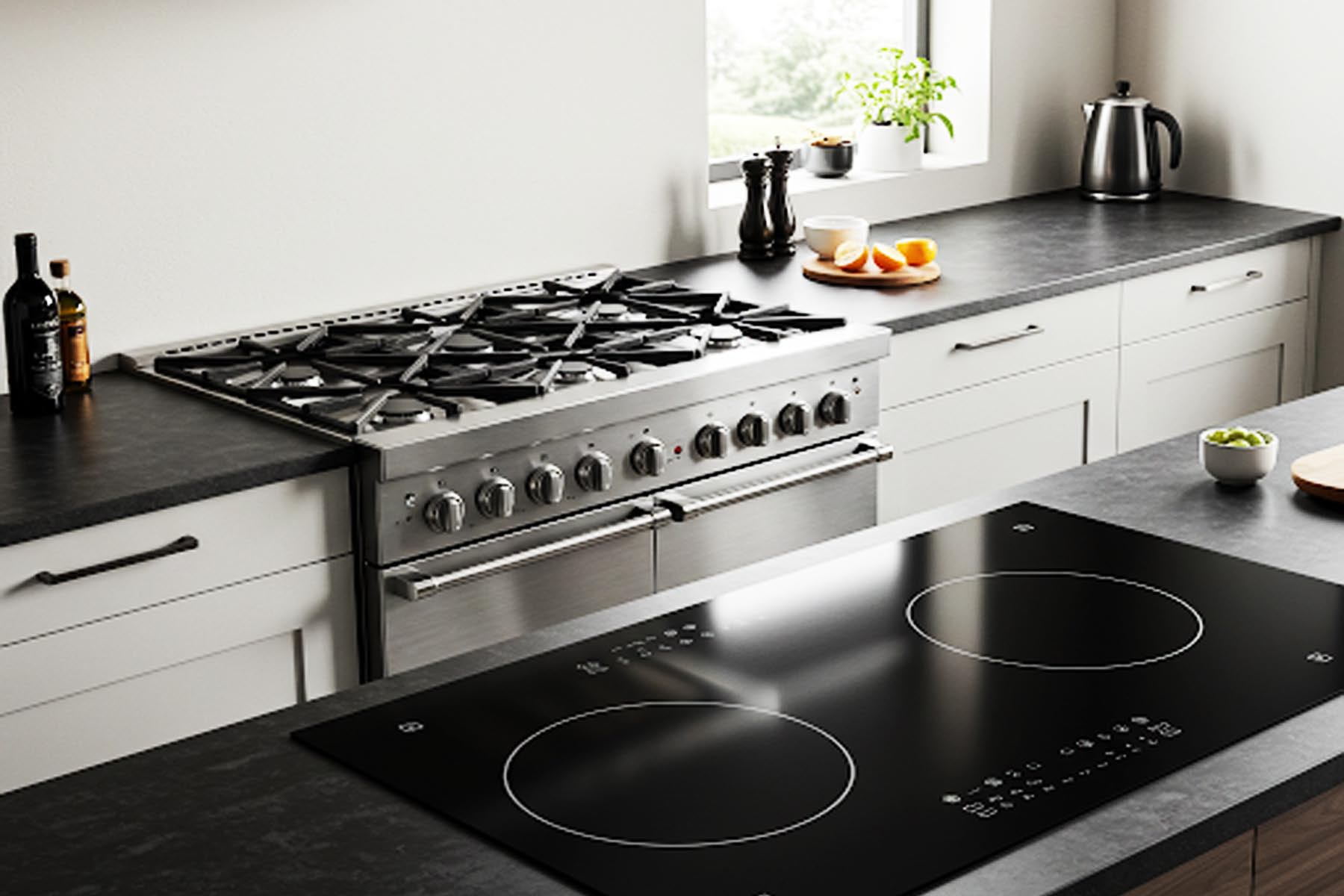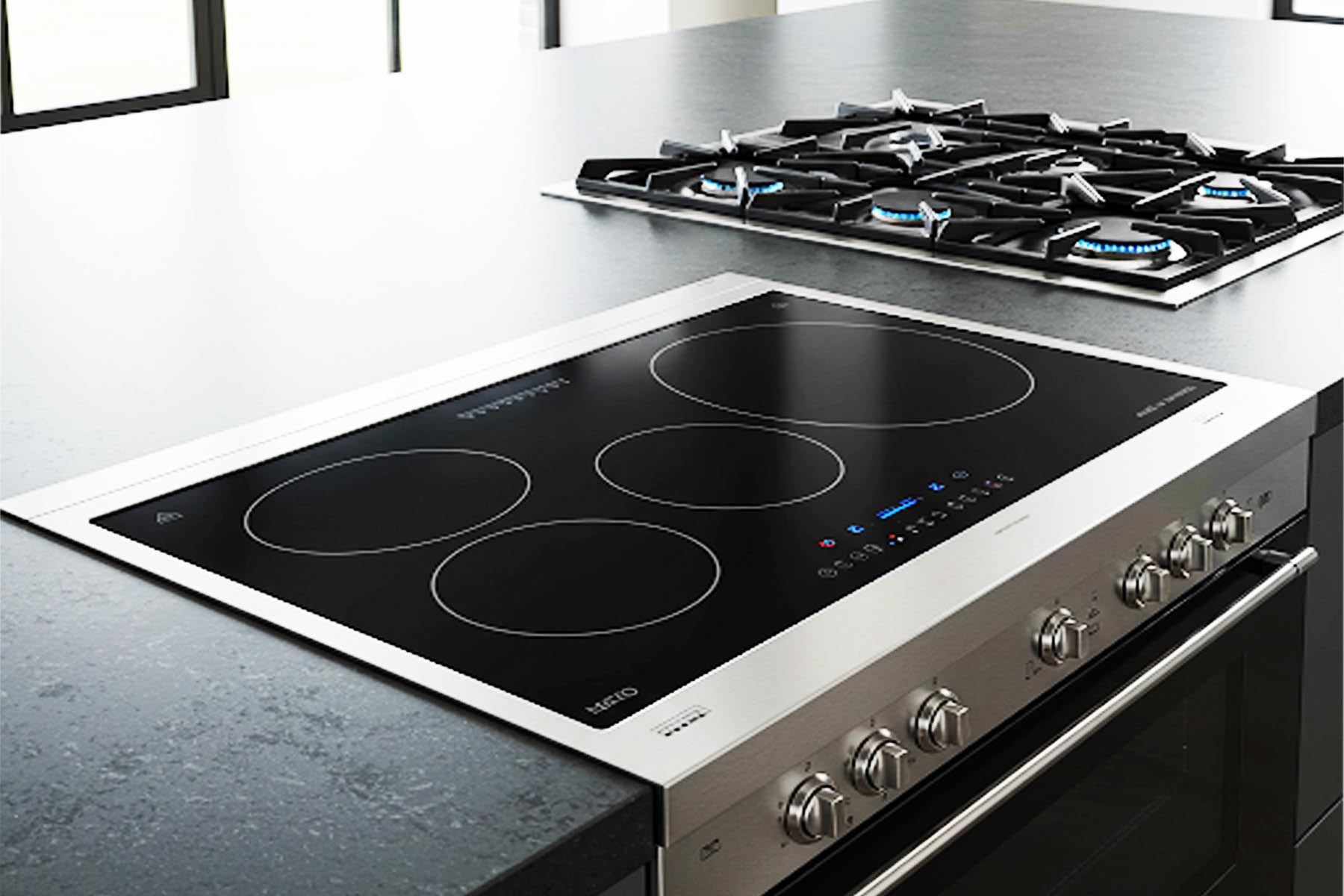
In the heart of Kyle, Texas—where backyard BBQs reign supreme and home kitchens are often the centerpiece of family life—the age-old debate between gas stoves and induction cooktops has taken on new heat. Sure, gas stoves have long been the darling of chefs and home cooks alike, but induction cooktops are quietly stealing the spotlight with their sleek design and futuristic tech. So, which one deserves a spot in your kitchen? Let’s settle this once and for all—with science, real-world tests, and a touch of Kyle charm.
The Showdown: Speed
Let’s start with speed because who doesn’t love dinner hitting the table faster? When it comes to boiling water or searing steak, induction cooktops leave gas stoves in the dust.
Here’s the jaw-dropping fact: induction cooktops can boil a quart of water in under two minutes, while a gas stove takes closer to 6-8 minutes. That’s not just impressive—it’s game-changing for busy Kyle families juggling school runs, work deadlines, and soccer practice. Induction uses electromagnetic energy to heat the pan directly, bypassing the need to warm the burner first. Gas, on the other hand, relies on an open flame that heats both the cookware and the surrounding air—a slower process by comparison.
But here’s the twist: while induction is faster, gas still offers more finesse for low-and-slow cooking like simmering sauces or melting chocolate. The flame’s variability allows for micro-adjustments that some induction models (especially older ones) struggle to match.
Energy Efficiency: Who’s Greener?
Now let’s talk about something that matters deeply to eco-conscious Kyle residents: energy efficiency. Induction cooktops are the clear winner here, but the margin is staggering.
Did you know that induction cooktops are up to 90% energy efficient, meaning almost all the energy they use goes directly into heating your food? Gas stoves, by contrast, hover around 40-50% efficiency because much of the heat escapes into the air instead of staying in your pan. That wasted heat isn’t just bad for the planet—it’s also bad for your wallet. In fact, studies show that switching from gas to induction can save homeowners up to $200 annually on energy bills.
For Kyle households looking to reduce their carbon footprint—or simply cut costs during those scorching Texas summers—induction is a no-brainer.
Cooking Performance: Precision Meets Power
When it comes to cooking performance, the battle gets personal. Gas stoves have always been celebrated for their responsiveness—you turn the knob, and the flame adjusts instantly. But induction cooktops are rewriting the rules of precision.
Take temperature control, for example. High-end induction models now offer incremental adjustments as fine as 1°F, allowing you to nail delicate tasks like tempering chocolate or poaching eggs without breaking a sweat. And when it comes to power, induction delivers serious muscle. A top-tier induction burner can reach temperatures over 600°F in seconds, perfect for achieving restaurant-quality sears on steaks or stir-fries.
Gas still holds its ground for visual appeal, though. There’s something undeniably satisfying about watching flames lick the bottom of a cast-iron skillet. Plus, gas works seamlessly with all types of cookware, whereas induction requires magnetic-compatible pots and pans—a potential hurdle if you’re attached to your grandmother’s copper-bottomed saucepan.
Real-World Tests: What Kyle Homeowners Need to Know
To truly understand how these appliances perform in real-life scenarios, we conducted side-by-side tests using recipes beloved by Kyle locals:
- Brisket Burn Test: For slow-cooked brisket, gas won hands down. Its ability to maintain consistent low heat made it ideal for tenderizing tough cuts.
- Taco Night Face-Off: Heating tortillas and browning meat? Induction’s rapid response time had dinner ready 10 minutes faster than gas.
- BBQ Sauce Simmer Challenge: Gas edged out induction here, thanks to its superior control at lower temperatures. No scorched sauce here!
The verdict? It depends on your lifestyle. If you’re a multitasking parent or someone who values speed and efficiency, induction might be your soulmate. But if you’re a culinary purist who loves the artistry of cooking, gas could still hold sway.

Safety and Practicality: A Local Perspective
Kyle’s humid climate adds another layer to the debate. Gas stoves release moisture and heat into the air, which can make kitchens feel stifling during summer months. Induction, on the other hand, stays cool to the touch outside the cookware zone, reducing ambient heat and making it a smarter choice for hot Texas days.
And then there’s safety. With young kids running around, many Kyle parents appreciate induction’s lack of open flames and reduced risk of burns. Plus, spills don’t bake onto smooth glass surfaces, making cleanup a breeze compared to the grime-prone grates of gas stoves.
The Verdict: Why AA Appliance Repair is Your Trusted Expert
Whether you’re team induction or loyal to gas, one thing is certain: both appliances require expert care to perform at their best. At AA Appliance Repair, we specialize in diagnosing and repairing issues unique to each type of cooktop. From recalibrating induction sensors to fixing faulty igniters on gas stoves, our factory-trained technicians ensure your kitchen stays functional and fabulous.
So, whether you live near downtown Kyle, along Plum Creek Golf Course, or closer to Hays CISD schools, we’re ready to serve you.
AA Appliance Repair: Where Innovation Meets Expertise.
For top-pro service with over 300 five-star reviews on Thumbtack, trust AA Appliance Repair for the latest trends and premier appliance repair services in Kyle and the Austin Metropolitan Area. Schedule an appointment with AA Appliance Repair at 512 316 5177 or leave a message on our website. Experience added benefits with our Loyalty Discount Program and Proactive Maintenance Plans for Long-Term Performance.
Service Coverage: Georgetown, Cedar Park, Round Rock, Pflugerville, Hutto, Leander, Liberty Hill, and Austin.
Extended Service Areas: Bee Cave, Lago Vista, Lakeway, Jonestown, Kyle, Buda, Dripping Springs, Lockhart, and San Marcos.

